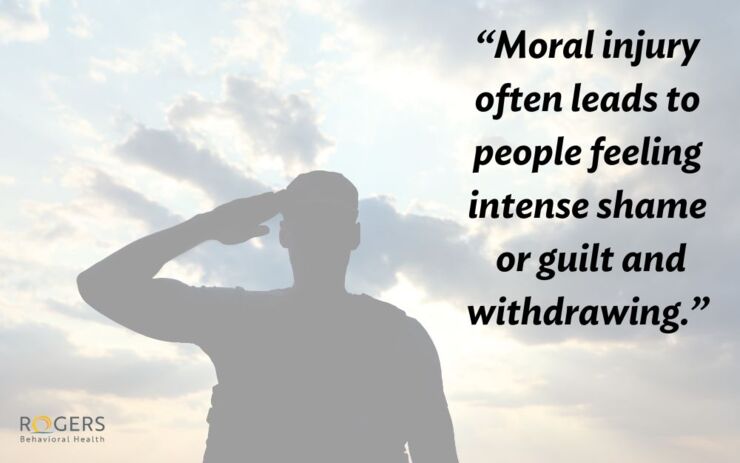Strategies for managing workplace burnout
Posted on 05/23/24 10:03:am
Share this article:
For Mental Health Awareness Month, Jerry Halverson, MD, FACPsych, DFAPA, senior physician executive, psychiatrist, and Emily Jonesberg, MSW, LCSW, program manager, Rogers Community Learning and Engagement and WISE, are sharing their expert insights on workplace burnout.
We wrap up our two-part series by discussing why it matters and steps you can take to manage it.
Why does burnout in the workplace matter?
Besides affecting how people do their jobs, burnout impacts how people engage at home and perform in other things they do outside of work. People who feel burned out are less effective and less happy with everything that they’re doing. Burnout can lead to depression, and in severe cases, suicidal ideation, which medical professionals are more susceptible to.
Burned out staff can lead to an increased likelihood of complaints and incidents within the workplace because they're not as attentive to other people's needs and not as observant because they're drained. They're much more likely to respond in ways that aren't as warm and compassionate as they should be. They’re also much more likely to leave the workplace.
We’ve also found in our work with compassion resilience that if you have team members who are experiencing feelings of burnout, or compassion fatigue, it's much more challenging to be in that work environment and remain in a place of balance and compassion resilience. We can all empathize with that. When you're surrounded by colleagues who are super drained it negatively impacts the morale of the entire group.
Even if burned out employees don’t leave, they will be less productive, less likely to meet the company’s metrics, and as mentioned before, less likely to be contributing creatively to initiatives.
How to address burnout in the workplace
There are several steps you can take if you’re feeling burned out:
- Identify what you’re feeling. Just like people struggling with depression, a person experiencing burnout is usually the last one to recognize it.
- Pay attention to comments friends and family members are making.
- Pinpoint what’s contributing to feelings of fatigue or burnout.
- Take time away from work if you’re able to. Sometimes burnout can be taken care of by a well-placed vacation, a long weekend, or a day off.
- Create time to engage in enjoyable activities, like walking the dog outside on a nice day for a little bit longer period of time, reading a book for a while, or allowing yourself an extra couple of hours to sleep at night. Pleasurable activities, even small things, help recharge and replenish us.
- Experiment with fun activities. Not everyone knows what they enjoy or takes the time to think about self-care or to develop hobbies. If that’s you, then experiment. Try doing what other people think is fun. When our patients are depressed, we help them figure out what they enjoy doing then ask them to do it. That’s known as behavioral activation. People find that helpful.
- Think of what helps you feel resilient. What can you do to minimize what’s driving your fatigue? Or what things can you do more of that are building your resilience?
- Think about what’s within your lotus of control. How can you minimize the amount of time and energy you’re putting toward things you don’t have control over? At the end of the day, you can spend time thinking about, strategizing, and stressing over them, and they're still going to be there. Unfortunately, you’ll be just that much more depleted. A perspective shift can be really powerful and helpful.
- Find allies at work. If you’re finding that systemic issues at work are contributing to your feelings of burnout, consider finding people within your team or in other departments to express concerns.
- Consider changing jobs. You may be in a position where, for your well-being, you need something to be different. While not everything that causes one’s sense of burnout can be changed, some things can. With the support of a supervisor, together you may be able to identify ways to eliminate or minimize those things that contribute to your burnout. And, if you don’t see that things are changing at your current place of employment, it may be best to look for something new.
What is workplace burnout?
Read our blog, "Workplace burnout: Building awareness and prevention" to learn more about burnout in the workplace, including signs of workplace burnout.
Rogers’ resources
If you’re interested in learning more about compassion resilience, check out free resources on Rogers’ website here.
If you or a loved one is struggling with anxiety, OCD, addiction, depression or other mood disorder, or an eating disorder, our compassionate team of experts is here to help. Call 800-767-411 for a free, confidential screening.



